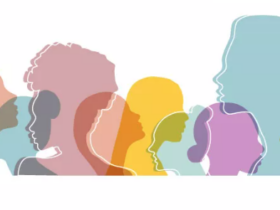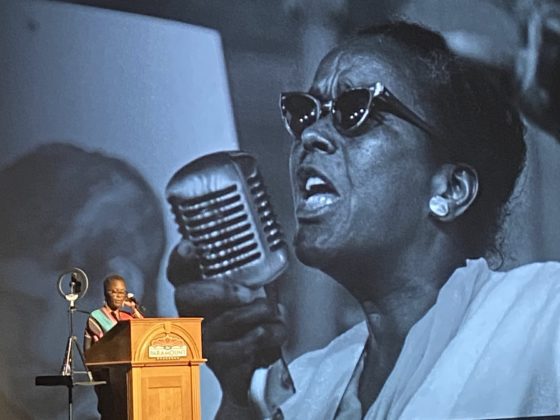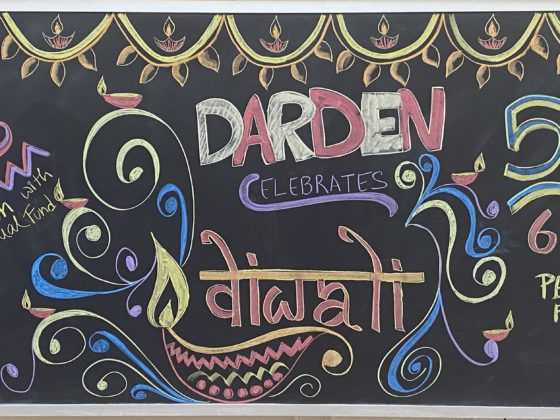I received an e-mail from one of my colleagues at work letting me know that she was part of the theatrical crew producing For Colored Girls at a local Charlottesville theatre. This colleague is very good about letting the Darden staff and faculty know about interesting theatrical productions with which she is engaged and inviting the community out to see the them. I am so glad she does that. “For Colored Girls Who Have Considered Suicide When the Rainbow is Enuf” is a wonderful, landmark literary work that became a tony nominated Broadway play. In brief, it is the Black woman’s story with multiple facets as experienced through Ntozake Shange’s poetic pen. Seven women represented by various rainbow colors, share their stories of love, heartache, domestic violence, abortion, rape and abandonment. It is intense.
A group of Darden staff decided to see the play together. After some discussion the group decided that it wanted others in the community to participate. Darden has Staff/Faculty sections modeled after student classroom sections, to encourage staff and faculty to collectively impact the community around themes/topics that interest and matter to them. We have a “Create Your Own” cross section for those of us that want to be a bit less structured and more ad-hoc around our themes. As a result of the discussion, the “Create Your Own” cross section and the Darden Office of Diversity and Inclusion partnered to invite the entire Faculty and Staff group to see the play. Yes, we did.
Part of my initial reason for supporting this idea was simply about the artistic movement tradition itself. Think Social Realism, Mexican Muralism, Social Documentary Photography, Black Arts Movement – you get the idea. Often art has taken the mantel for social movement through music, dance, drama, still art, photography, etc., and placed it starkly in the face of the art patron. Art has made shadows light, what was disdained revered and what was shunned mesmerizing. For Colored Girls is a perfect example of how this was done. I thought seeing this cornerstone play would be a wonderful gateway to discussion about culture, social movement and diversity. What better way than with art. There were so many other reasons for supporting this idea, many personal, but this blog entry would then become way too long if I were to share. Suffice to say, at the end of the play there is a symbolic physical gesture that calls to mind self-empowerment combined with a mantra – “I found God in myself/and I loved her/I loved her fiercely.”
Not all faculty and staff participated but for those of us who did, it was a rewarding experience. Immediately at the conclusion of the play, the discussion turned to generational differences, the Feminist Movement and Black culture especially in the 60’s and 70’s. We couldn’t help ourselves. We shared personal stories about our own growth in cross cultural circumstances and if they hadn’t started turning out the lights, we might still be there talking. We’ve decided to have a brown bag lunch to continue our conversation but there are still conversations happening in the hallways today.
This isn’t the traditional Diversity activity you might expect to see at a business school. However, it is one that can have positive impact on the diversity and inclusion culture at a school. It’s happening here in real time.
Kellie Sauls
Director, Diversity Initiatives and Programming
Associate Director of Admissions




